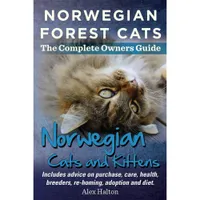The Norwegian Forest cat is a playful and patient large ball of fluff that loves the great outdoors
There's loads to love about Norway's national cat – is this water-loving breed right for your home
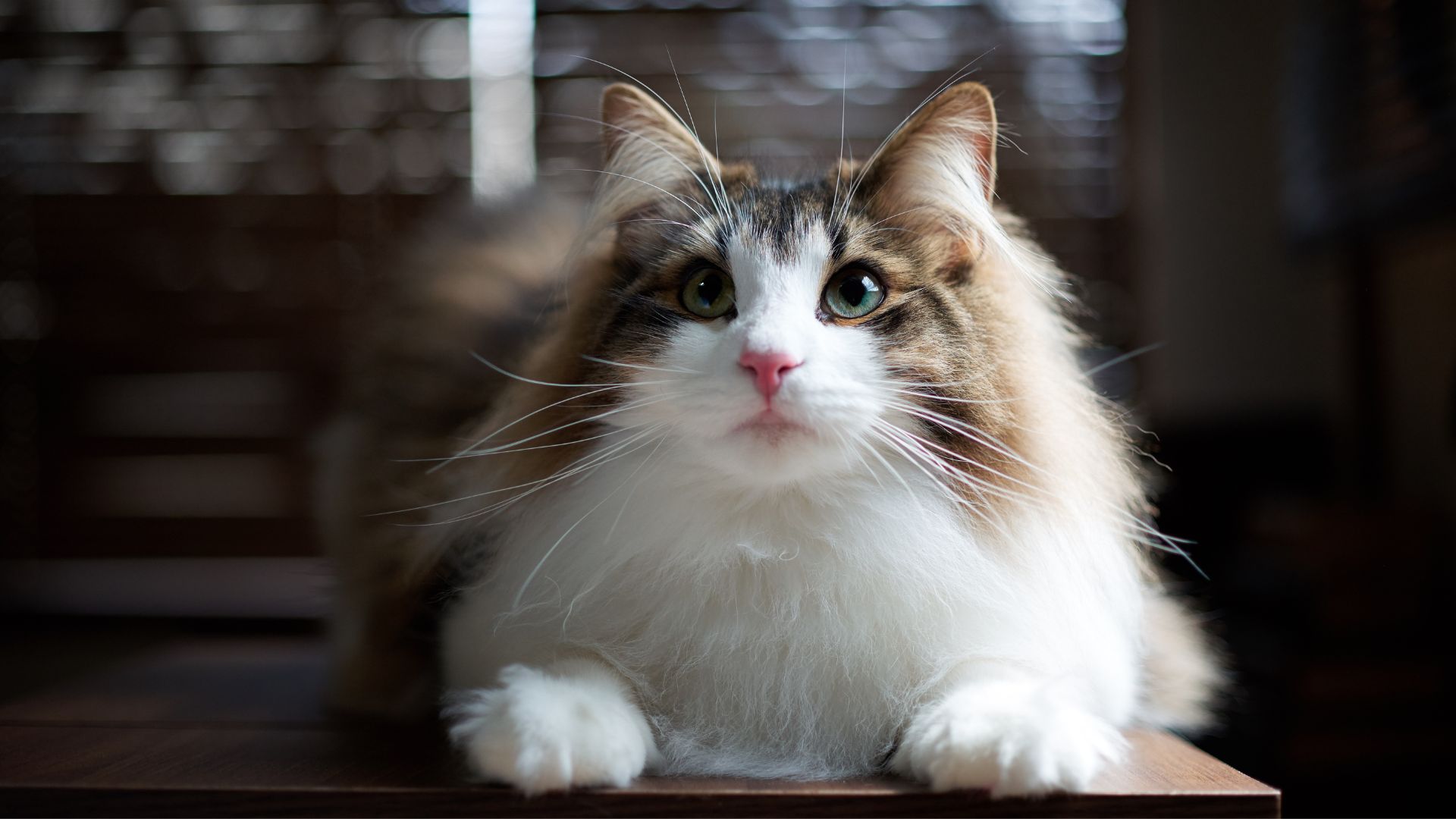
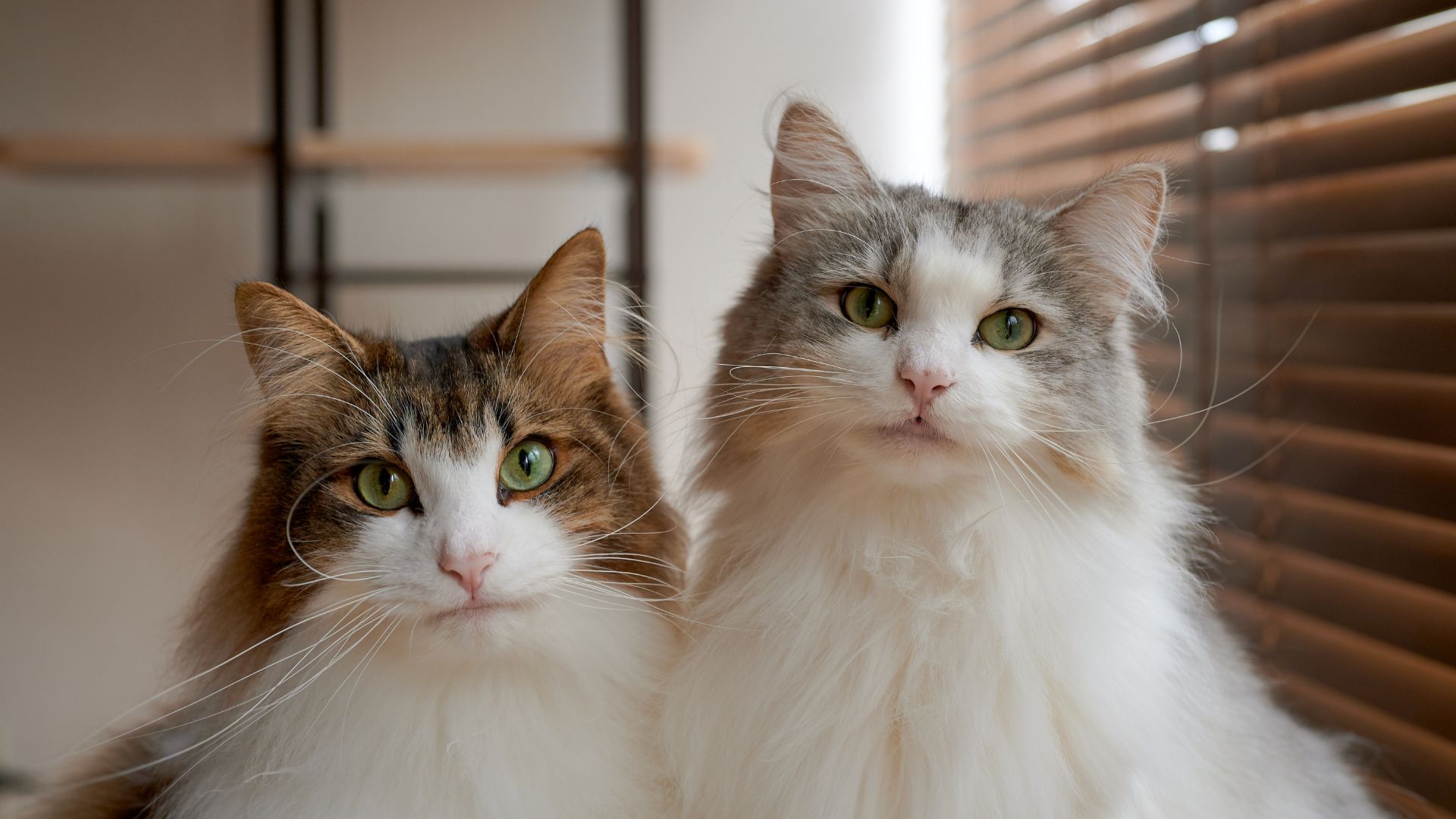
Other names: Wegies and Skogkatt (which translates to forest cat in Norwegian)
Life expectancy: 12–16 years
Size: 8–20lbs, 12–18 inches long and 10–12 inches tall
Coat: cream, white, black, blue or golden, with a solid, bicolor, tortoiseshell or calico pattern
Eye colour: green, gold, or copper
Temperament: robust, companionable, intelligent, playful and patient
Origin/native country: Norway
Calm, gentle and overflowing with fur, the beautiful Norwegian Forest Cat is a sight to behold. As its name suggests, this treasure is Norway's national cat and has been since King Olav V declared it as such in 1938. It’s also the feline of choice in Iceland, Finland, and Sweden.
It’s believed that the water-loving Norwegian Forest cat started its life aboard Viking ships, journeying from Great Britain to Norway in 1000 AD, making it one of the oldest cat breeds. These fabulous fur balls then lived in Norwegian forests for hundreds of years before being domesticated. Today, these clever and intelligent cats still have the hunting and climbing prowess of their feline ancestors.
These big balls of fluff are the second largest cat breed after the Maine Coon, with males reaching weights of up to 20lbs. But the interesting list of characteristics about this majestic creature doesn’t stop there. If you’re wondering whether a Norwegian Forest cat is right for your home, stick right here.
Are Norwegian Forest cats hypoallergenic?
If you’re looking for a hypoallergenic cat breed, you won’t find it in a Norwegian Forest cat. Originating in Norway, where temperatures during winter can drop as low as -40°C, these feline friends have a dense undercoat that helps to keep them warm all year round.
“These cats have a characteristically long and thick, double coat,” notes vet Dr Rebecca MacMillan. “They shed moderate amounts throughout the year, with their fur and dander containing the Fel d1 protein. This protein is spread from their saliva through their coat as they groom, causing a reaction in people with allergies.”
Therefore, if you’re looking for cats that don’t shed much, consider a non-shedding cat breed, like a sphynx, Peterbald or Cornish Rex, which might better suit pet owners who are allergic to cats or those who want to avoid finding fur all over their floors.
Are Norwegian Forest cats vocal?
Chatty feline friends make a great choice for those who live alone, or for any household that’s looking for a lively fur friend to add to their family.
Get the best advice, tips and top tech for your beloved Pets
And while Norwegian Forest cats can be vocal, they aren’t considered to be amongst the loudest cat breeds.
“They may communicate with you by meowing, chirping, or yowling,” Dr MacMillan says.
“Each cat will be an individual though, some may be louder or quieter than others!”
How to groom a Norwegian Forest cat
Just one look at this long-haired cat will confirm that this isn’t a low-maintenance breed.
To help keep mats and tangles at bay, it’s worth grooming long-haired cats like a Norwegian Forest cat every day. Therefore, it’s a wise idea to not only learn the different types of cat brushes and how to use them, but also invest in one of the best cat brushes to keep their coat looking in pristine condition.
Even though healthy adult cats can spend up to 50% of their day grooming themselves, they still benefit from regular brushing to help remove dirt, loose hair and dandruff. Grooming your cat can also help you bond better with your kitty.
If you are intending to adopt this breed, you should also note that they shed their thick and full coat every summer.
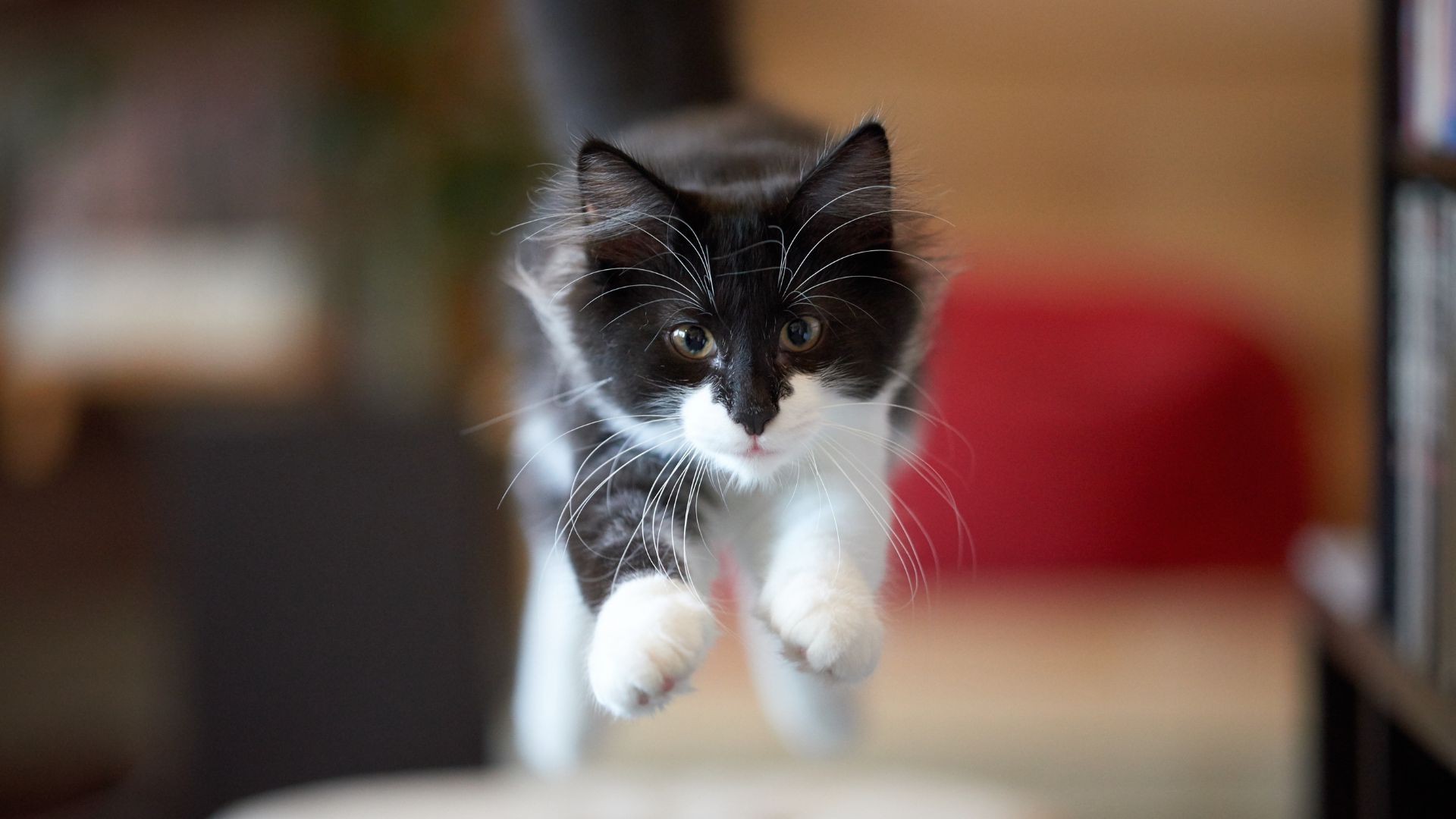
How much exercise does a Norwegian Forest cat need?
Whether it’s playing on one of the best cat trees, scaling furniture (Wegies are incredibly skilled climbers) or heading out for a swim (this is a cat breed that loves water), a Norwegian Forest cat will need around 30 minutes of exercise a day to keep them mentally stimulated and healthy.
Wisdom Panel Cat DNA Test | Amazon
Not sure exactly what breed your cat is? This kit screens for 70+ breeds, 45 genetic health insights and 25+ physical traits – because knowing every detail about your cat helps you understand how best to care for them.
Norwegian Forest cat health issues
According to Dr MacMillan, Norwegian Forest cats are susceptible to a few health conditions, including hypertrophic cardiomyopathy (HCM).
“This condition causes the thickening of the heart walls, which affects the heart’s ability to pump effectively,” Dr MacMillan says. “I have seen many cats with HCM succumb to heart failure during my time in practice.”
Therefore, screening tests are recommended, so if you are considering welcoming this breed into your family, check if your breeder has done this before purchasing a kitten from them.
Norwegian Forest cats also can suffer from an inherited disorder known as glycogen storage disease.
“Affected cats struggle with the way they process glycogen in the body, causing organ dysfunction,” Dr MacMillan says.
Another inherited health problem in this breed is hip dysplasia.
“This can affect the way the hip joint develops causing pain and limping, " the Dr explains. "Again, only healthy cats should be mated to reduce the chances of kittens inheriting this disease."
It is not possible to avoid the risk of inherited diseases altogether, but Dr MacMillan recommends seeking a reputable breeder who has done all the recommended health screening.
“This will increase the chances of your kitten being healthy. Look after your Norwegian Forest cat by feeding them an appropriate diet, keeping them at a healthy weight and practicing preventative medicine such as vaccinations, anti-parasite treatment, and neutering.”
How much does a Norwegian Forest cat cost?
A Norwegian Forest cat is considered pricey as it could set you back up to $2,000, but this is still cheaper than a Maine Coon, which is another large breed of cat and can cost a hefty $3,000 more. Either way, a Wegie is considered to be one of the most expensive cat breeds.
Of course, how much you pay for a Norwegian Forest cat will depend on the breeder and area. Generally speaking, average prices sit between $900 to $1,500.
Should I get a Norwegian Forest cat?
Robust, fast and agile the Norwegian Forest cat has many attributes to love. They’re also one of the calmest cat breeds, as they are known for having a very friendly, gentle, and relaxed temperament, which makes them great for families.
This large fluffy breed is often favored because it has a love for the outdoors – so if you are an active household, you’ve met your match.
Of course, their coat is a thing of beauty. But all that fur will require some upkeep. Therefore, if you have the time (love and care) to give to a Norwegian Forest it will fit right in and make your home their cat kingdom.
Norwegian Forest Cats And Kittens | Amazon
This owners guide provides essential information on the origin, physical attributes, purchase, temperament, health issues, and socialization of this wonderful breed.
Read next: Reasons to love Norwegian Forest cats
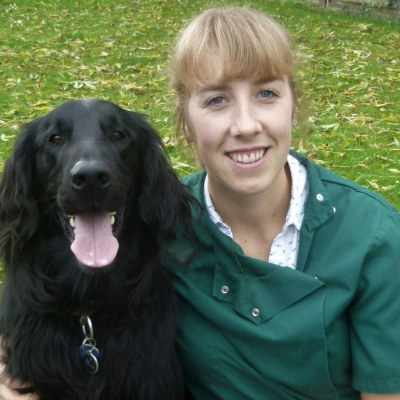
Having graduated in 2009 from the Royal Veterinary College in London as a veterinary surgeon, Rebecca is highly experienced in first opinion small animal practice, having done a mixture of day-to-day routine work, on-call emergency duties and managerial roles over the years. Rebecca recently achieved a BSAVA postgraduate certificate in small animal medicine (with commendation).
Rebecca writes on various feline and canine topics, including behavior, nutrition, and health. Outside of work and writing she enjoys walking her own dog, spending time with her young family and baking!
Edited by Georgia Guerin.
This feature was last updated in May 2025 by Becks Shepherd.

Becks Shepherd is a lifestyle journalist who has worked with titles such as Tom's Guide, Marie Claire, and Fit and Well.
In addition to this, she’s a pet writer with nearly a decade of editorial experience across digital and print media. A devoted “dog aunt” and lifelong animal lover, Becks brings a personal touch to her pet content—whether she’s testing the latest dog gear or digging into behavioral tips.
She works closely with veterinary experts to ensure factual accuracy and is currently exploring animal care certifications to deepen her knowledge. Her work has appeared in leading outlets across health, wellness, and pet care spaces.

